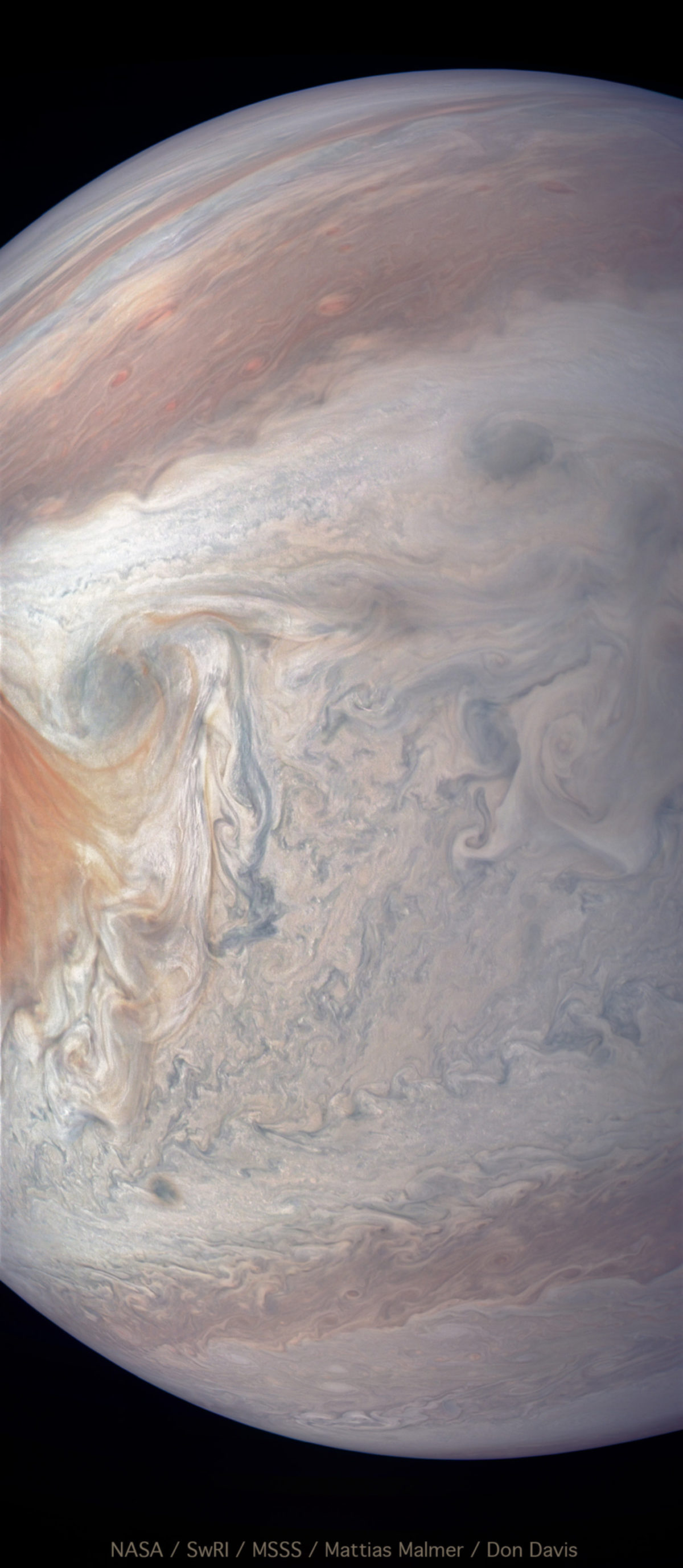Emily Lakdawalla • May 11, 2018
Juno's 12th perijove in lifelike color
Because the JunoCam team depends upon the labor of volunteers to process their images for public consumption, there's been lovely diversity in the portrayal of Jupiter from Juno data. Many image processors chose to enhance and sharpen the subtle contrasts in the cloud features, but space artist Don Davis is usually after a perspective that rings true to our subjective judgment of what Jupiter ought to look like. With the help of some preprocessing by Mattias Malmer, Davis presents us how Jupiter might have looked on April 1, 2018, if we'd been aboard Juno.


Here's a detail from that northern turbulent region. Look at the vertical relief on the clouds!

Now let's sweep down past the red spot in three images...


And finally, just for fun: Davis compares Earth's clouds with Jupiter's, at the same scale.

Support our core enterprises
Your support powers our mission to explore worlds, find life, and defend Earth. You make all the difference when you make a gift. Give today!
Donate

 Explore Worlds
Explore Worlds Find Life
Find Life Defend Earth
Defend Earth


